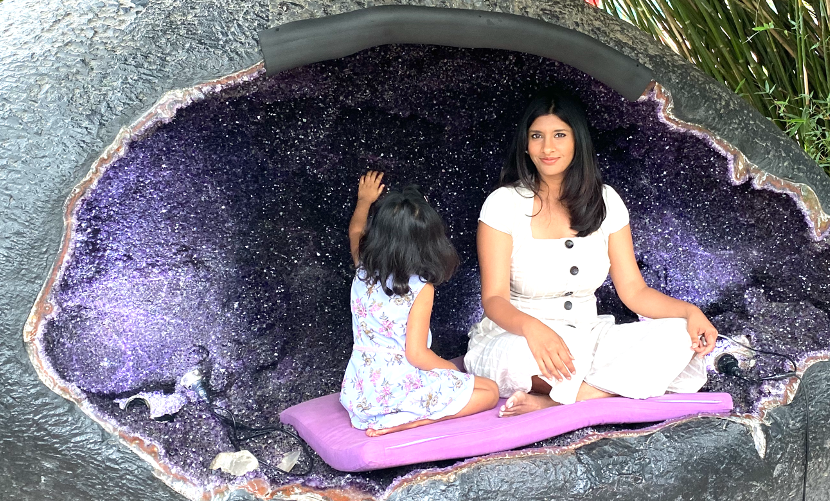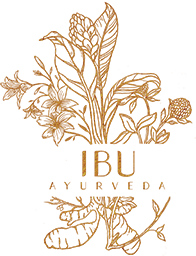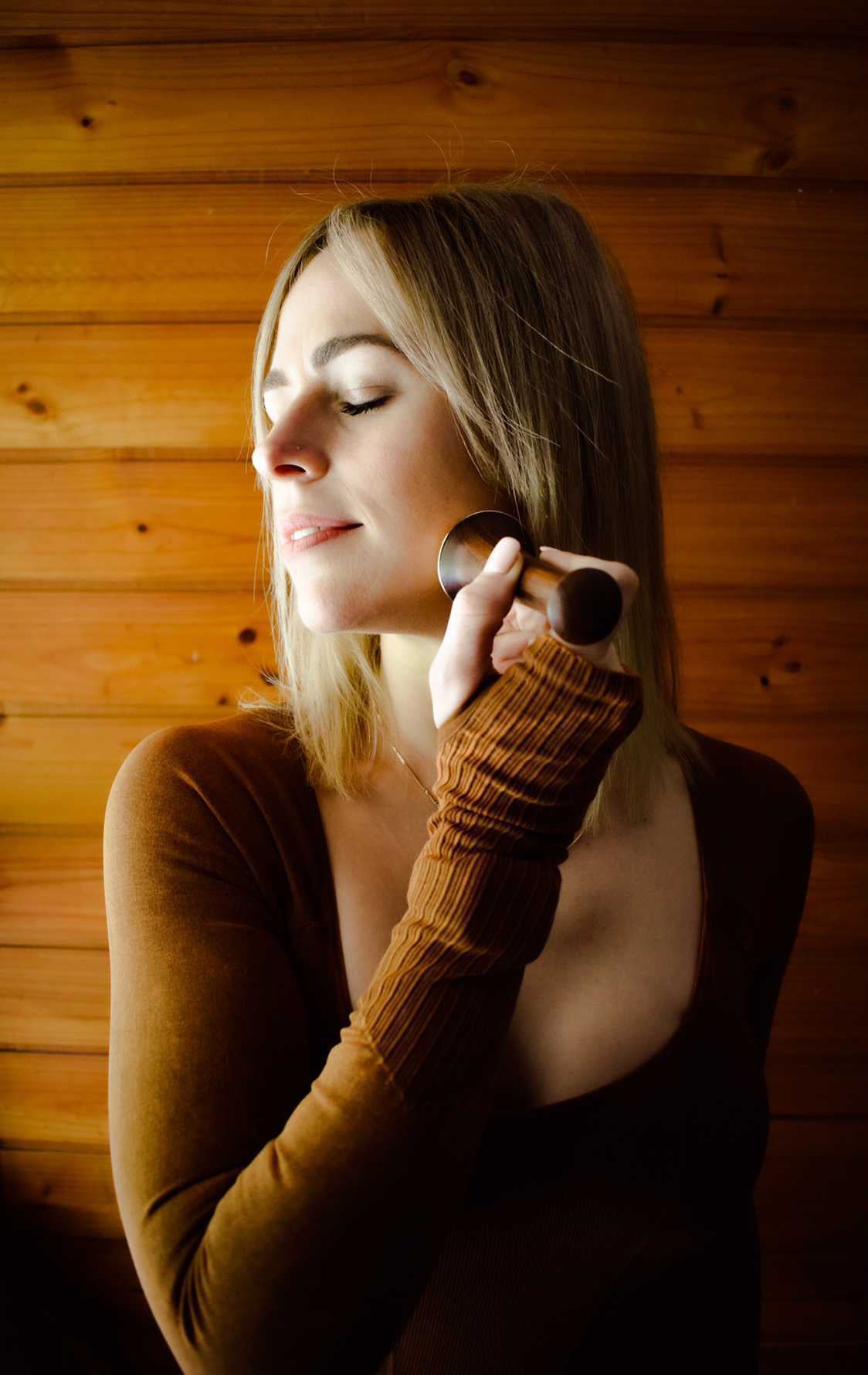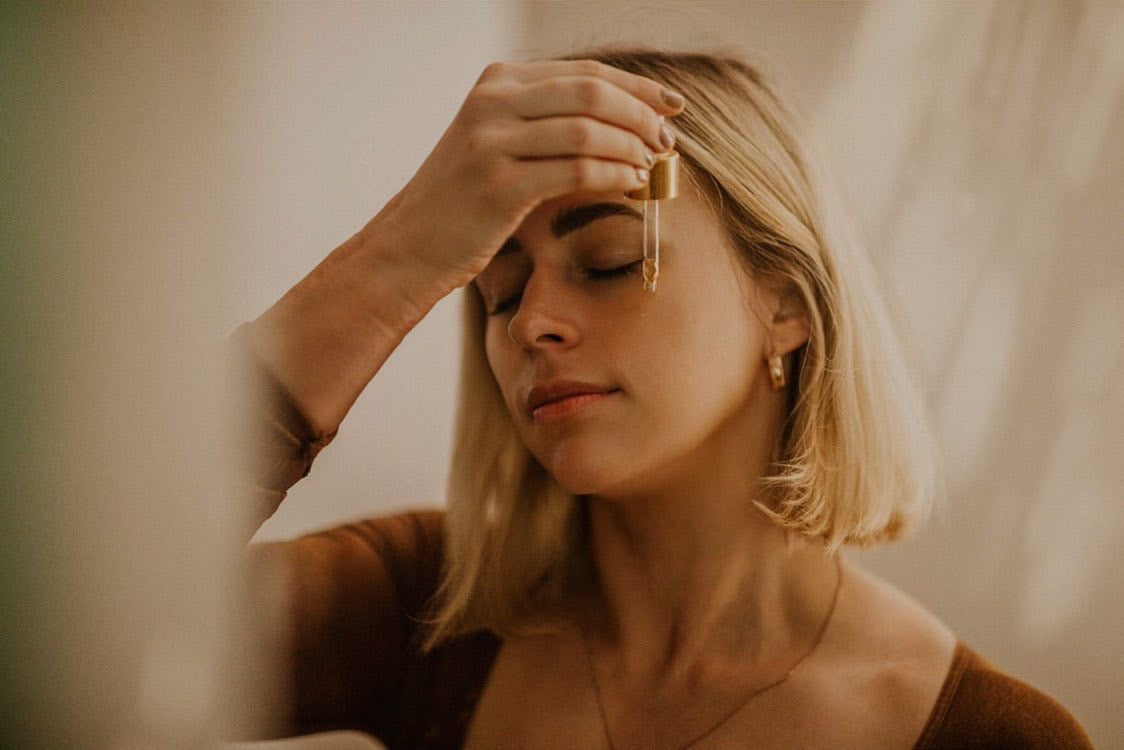Self-care through the Ayurvedic Lens with Siri from Prana Squared
·

·
Emanating clarity and wisdom, Ayurvedic practitioner Siri is inspired by her heritage, motherhood and empowering others to experience the rich rewards of an Ayurvedic lifestyle.
Generous with sharing her knowledge, Siri reveals how a daily rhythm balances our being, lists some key health tips for women, and discusses why a Vata imbalance is behind so many health conditions.
We hope you enjoy this deeply informative chat as much as we did, and get inspired to incorporate some her tips today!
Thank you so much for taking the time to chat with us - we are massive fans of the meaningful work you are doing.
Firstly, with the current trends towards Ayurveda, can you tell us why Ayurveda is at the heart of your business?
I honestly believe that people are born with an understanding of their true reality, and overtime that reality gets clouded by experiences, relationships, environment and our diet/lifestyle.
In our current world of pandemics and political uproars, people are looking for that connection with their reality again and are on a journey to seek it.
Ayurveda is a 5000-year-old science that has the answers in how to connect the mind; body and soul so I believe people are now discovering the benefits of this beautiful science and discovering the connection to reality.
For me, this is why I have established a business focusing on Ayurveda, I know the benefits it provides and I feel uplifted when others experience these too.
What led you on the path to Ayurveda for fertility, pregnancy and postpartum?

When I had my first child, I was not aware of the care my body required so that I could be a caretaker for my little girl. I was one of those women who wanted to get up and start moving, unrestricted by the extra weight and just wanted to touch my toes again!
However little did I know that in order for me to start moving, my body needed rest. There is a saying in Ayurveda that the 42 days postpartum care is equivalent to the quality of life for the next 42 years.
I was blessed to be under my mums care who imparted her wisdom of the tradition to me, but it wasn’t until my second child that I truly understood the value of this rich beautiful tradition. With my second I stayed home for 42 days, nourished my gut with good food and herbs, grounded my mind with spiritual practise, focused on strengthening my muscles with healing massages and light yoga.
The difference between the two births – incredible! I felt so much more full of energy with my second than my first, healing was quicker, breastfeeding was easier and my connection with my bub so much more deeper.
It was from then on that I wanted to share this wisdom with my network who later became my most committed clients. It was just beautiful to see each one of them share positive feedback about their postpartum journey.
Would you be able to explain to us the concept and importance of nourishing women in the child bearing years in Ayurveda?
The importance of nourishing women is crucial in Ayurveda as it looks at individualising healing to help women in every stage of life, especially the child bearing years. I have seen time and again Ayurveda has addressed issues like infertility, polycystic ovaries, irregular menstruation, and endometriosis.
The science helps women who are finding it difficult to fall pregnant without the use of intervention. It sets guidelines to ensure one has a healthy and pain free pregnancy, explaining some of the most intricate details that modern medicine is just starting to discover today.
I am constantly amazed at how much knowledge is captured in the traditional science without relying on technology. I feel like the knowledge needs to be shared far and wide so women make the right choices and feel empowered to make them for themselves and their children.
How would you define self care in the Ayurvedic model of health?
Self-care from an Ayurvedic lens means to nourish both internally and externally – removing build up of toxins and helping our whole system come into balance.
To achieve balance we need to know ourselves and this is where the light of Ayurveda shines bright. It recognises that each individual has their own requirement of self care that suits them, it is not universal but particular to an individuals body type.
By recognising yourself you’ll be able to hone into what works for you to give yourself the best results. It’s about knowing how to care for your self and using the right products and practises to reach that outcome.
How important is the dinacharyia or daily self care routine?

A daily self care routine can help us remove toxins, regulate our body clock and digestion. It is one of the best things you can do to stay in balance.
Your thoughts, your space, your diet, your lifestyle, your daily dose of exercise are all part of the care you need to give yourself in order to really achieve ‘self care’.
A daily self care routine involves waking up with the sun, drinking warm water, emptying bowel and bladder, rejuvenation of the senses, care of teeth mouth, gums, oil massage, exercise, meditation and bathing.
A famous Ayurveda quote is ‘ whatever you do every day is stronger medicine than whatever medicine you take occasionally’.
As a mother, what does your daily self care routine look like?

As a mother it becomes difficult to follow any kind of set routine, which is why it is even more important to do the things you can consistently.
A daily rhythm helps keep vata (air + space) in check and supports your digestive fire. Rather than a rigid schedule, a daily rhythm allows for the ebb + flow of life while anchoring in on sleep and meal times.
To ensure I am the best version of myself for my kids, I prioritise on the following daily self care practises:
- Wake up early and watch the sunrise – even 5 mins of breathwork/mediation practise can set the tone for the rest of the day.
- Daily self massage with Ibu Ayurveda massage oils followed by light yoga.
- Drink hot water approximately 20-30 mins before breakfast to kickstart your digestion.
- Have my biggest meal between 12-2pm when digestive fire is at its peak.
- Get outdoors for some earthing, bare feet are a must for grounding before sunset.
- Warm cup of Ayurvedic milk before bed – a must have tonic for any breastfeeding mama or for overall rejuvenation.
Do you have a fave Ayurveda inspired balancing recipe you could share?

My go to recipe for a good nights rest, overall rejuvenation, stress & anxiety tamer is this grounding warm Ayurvedic milk recipe I learnt over the years, something I have without fail every night
-
1 cup of full cream milk and 1 cup of water
-
3 opened cardamom pods
-
A pinch of turmeric and black pepper
-
A small slice of ginger
Boil all the ingredients until reduced to 1 cup and then pour into a cup adding 3 saffron threads.
If you could give our followers just one piece of game changing advice what would it be?

An imbalance of ‘Vata’ , i.e. the air and space elements contributes to over 80 listed diseases in the texts of Ayurveda. It is responsible for destruction and can lead to build up of toxins if it is not kept in balance.
In the western world , mums wear many hats and we are constantly juggling competing priorities.
Many of our imbalances also occur based on seasonal changes, and as we in Australia are heading into the crispiness of winter, it is evident that the cold, drying nature of Vata is in the air! It’s important to find calm by addressing Vata.
One way to ensure your body is getting the nourishment it needs is to lubricate - a daily self massage is one sure way to pacify Vata.
Consume your food and beverages warm with warm spices and ensure the food you make is wholesome, organic and healthy with plenty of ghee/butter. I also recommend sipping on warm water throughout the day.
There are also numerous adaptogens and natural herbal remedies that can help pacify Vata if you’re looking for something natural, safe and effective.
Whether you are breastfeeding, pregnant or treating a young one, consult an Ayurvedic practioner to get recommendations on the herbs and treatments that are suited to you.
Thanks so much for your time Siri! We would love to know what’s next for you?
Over the last few years, I completed my Ayurvedic Practioner course. My course work in Ayurveda has covered all of the basics plus more in depth training in pulse reading, post-partum care and herbal preparations.
I formed Prana2 in January 2022. Prana means life force, the connecting force between mind, body and spirit and my vision is to help women increase their prana so that they can be vessels and carry it to their children/relationships.






Comments